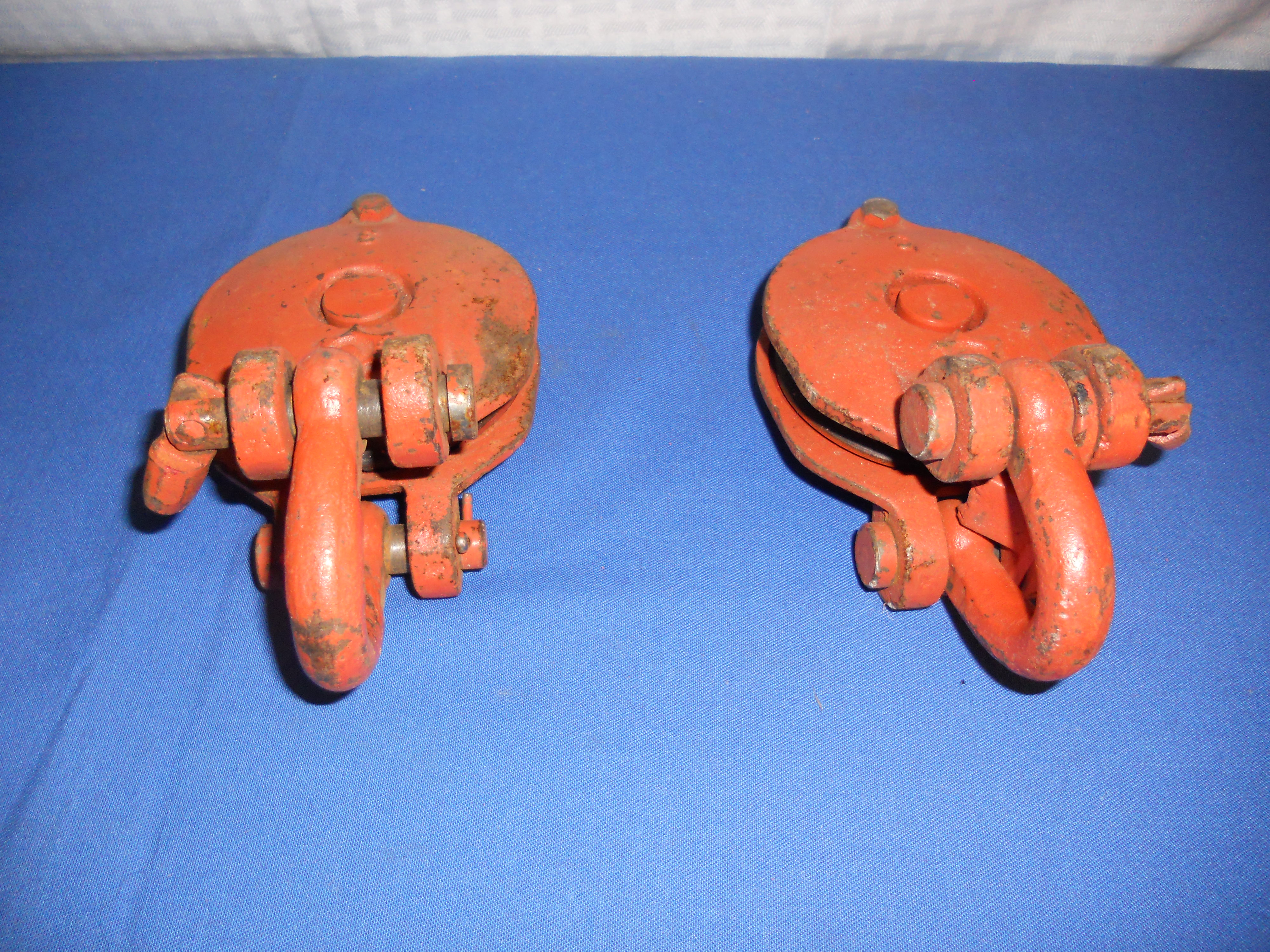

In selecting which side sheave to pass the rope Types and materials: Types: Then pass it over one of the side sheaves of the first block. Pass the running end over the center sheave of one block and back to the bottom sheave of the other block. Place the blocks so that the sheaves in one block are at right angles to the sheaves in the other block. You may lay the coil of rope beside either block.

If the blocks do incline, the rope will drag across the edges of the sheaves and the shell of the block and cut the fibers. In reeving triple blocks, it is imperative that you put the hoisting strain at the center of the blocks to prevent them from being inclined under the strain (see Figure -11). To do this, lay out the blocks on a clean and level surface other than the ground to avoid getting dirt into the operating parts, Figure-10 shows the reeving of single and double blocks. To prepare blocks for use, reeve, or pass a rope through, it. The fall line from the tackle system is led through the leading block to the line of most direct action. This block can be placed at any convenient position. Ordinarily, a snatch block is used as the leading block. In some tackle systems, the fall line leads off the last block in a direction that makes it difficult to apply the motive force required. Leading Blocks:īlocks used in the tackle to change the direction of the pull without affecting the system are called leading blocks (see Figure 9). The following figure-7 shows the rolling block and figure-8 shows the typical components of the rolling block. This block is fixed to a stationary object. The following figure-5 show utility block and figure-6 show typical components of the standing block. Traveling Block:Ī traveling block is attached to the load that is being lifted and moves as the load is lifted. The following figure-3 show traveling block and figure-4 show typical components of traveling block. The following figure-1 shows the snatch block and the figure-2 shows the typical components of the snatch block. Snatch blocks ordinarily are used where it is necessary to change the direction of the pull on the line. This is a single sheave block made so that the shell opens on one side at the base of the hook to permit a rope to be slipped over the sheave without threading the end of it through the block. A particular shape or type of construction.īlocks are designated as single, double, or triple, depending on the number of sheaves.Blocks are used to reverse the direction of the rope in the tackle.


 0 kommentar(er)
0 kommentar(er)
